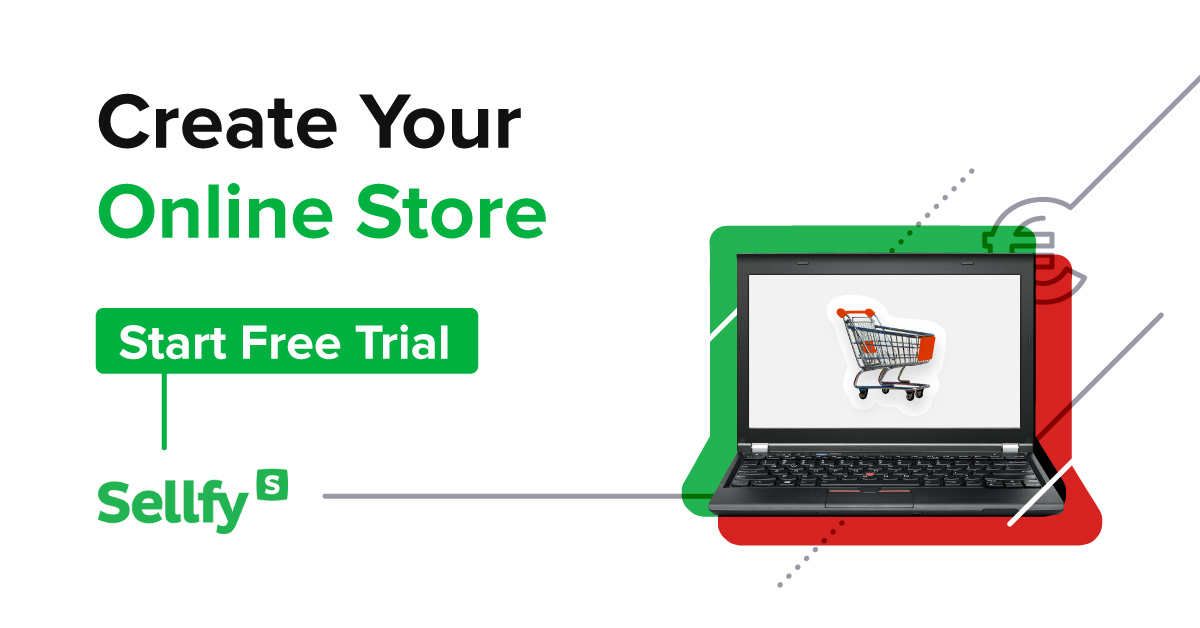No products in the cart.
You’re comparing Sellfy and Shopify for your online store, focusing on their top features. Sellfy is more affordable at $29 to $159 per month and excels in ease of setup with its user-friendly interface. Shopify, starting at $39 monthly, offers extensive customization options for a personalized store. Both platforms equally prioritize product management, featuring detailed inventory tracking and import options. Sellfy simplifies design for non-tech users, while Shopify caters to those who dive deep into coding. Marketing tools differ; Sellfy boosts direct email marketing, whereas Shopify capitalizes on a broader social media integration. Further exploration will reveal more about transaction fees, analytics, and customer support nuances.
Contents
hide
Key Takeaways
- Sellfy offers easier setup and simpler customization, ideal for users without technical expertise.
- Shopify provides more extensive customization options, suitable for deep technical integrations and a wider variety of themes.
- Both platforms offer robust product management and integration with social media, particularly Instagram and Facebook.
- Shopify’s marketing tools are more comprehensive, with better integration for broader social media strategies.
- Sellfy has a more flexible pricing structure with lower transaction fees, beneficial for smaller businesses or startups.
Pricing and Plans
When evaluating the affordability of ecommerce platforms, you’ll find that Sellfy and Shopify offer distinct pricing structures designed to cater to various business sizes and needs. Sellfy provides a range of plans from $29 to $159 per month, appealing to small to medium-sized businesses looking for subscription flexibility. Conversely, Shopify starts at $39 per month after an introductory trial, targeting perhaps a slightly higher initial investment but with robust features.
Sellfy stands out with its discount options, offering substantial long-term savings. Opting for yearly payments slashes prices by 40%, and a commitment to a two-year plan further reduces costs to between $19 and $99 per month. This model not only makes Sellfy attractive for budget-conscious entrepreneurs but also for those planning to scale operations without frequent platform switches.
Shopify, while lacking in biennial discount options, provides a three-month trial at $1, which can be a critical cost-saving feature for startups testing the ecommerce waters. Both platforms show a keen understanding of different market needs through their pricing strategies, ensuring that businesses can start small and grow efficiently, leveraging these cost comparisons and subscription flexibilities smartly.
Ease of Setup
After examining the cost implications of Sellfy and Shopify, it’s equally important to take into account how easily you can set up your online store with these platforms. Both Sellfy and Shopify enhance user experience through their setup efficiency, but they cater differently to beginners versus experts.
Sellfy stands out for those who prefer straightforward, no-fuss setup processes. Here’s why:
- No Coding Required: Simply sign up, and you’re ready to start adding your products. This approach minimizes the learning curve and is ideal if you’re not technically inclined.
- Quick Setup: Sellfy promises that you can have your store live in just a few minutes, allowing you to focus more on sales than on setup.
- User-Friendly Interface: The platform is designed with simplicity in mind, making navigation and operation intuitive for anyone, regardless of their tech skills.
On the other hand, Shopify caters well to users who’ve a bit more technical savvy or those who seek deeper customization. While it offers a user-friendly interface and helpful tutorials, the wealth of options can seem challenging. This makes Shopify particularly appealing if you’re looking to scale or need specific, tailored features that require a bit more setup time.
Both platforms aim to streamline the process, yet your choice might depend on how much control and customization you need from the start.
Product Management
Managing your product portfolio on either Sellfy or Shopify is streamlined and intuitive, allowing you to efficiently categorize, track, and update your inventory. Both platforms support a diverse range of products, from physical goods to digital downloads, but it’s important to note that they exclude items related to gambling, smoking, and nudity.
When it comes to product categorization, both Sellfy and Shopify shine, providing you with robust tools to organize your offerings. This is essential as it enhances the shopping experience for your customers and makes managing your store less cumbersome. You’ll find that adding new products or variations is straightforward, and setting different categories helps in directing your customers to the right product quickly.
Inventory tracking is another key feature where Sellfy and Shopify excel. They both offer detailed insights into your stock levels, sales performance, and trends. This real-time data is crucial for making informed decisions about stock replenishment and for planning promotional strategies.
Additionally, the ability to import product designs from platforms like Redbubble and Etsy into both Sellfy and Shopify not only expands your inventory options but also simplifies the management process, ensuring you can focus more on growing your business.
Design and Customization
Exploring the design and customization features of Sellfy and Shopify reveals significant differences in their approach to user engagement and store personalization.
Sellfy simplifies the customization process, making it highly accessible for those without technical skills. You can easily tailor your online storefront with Sellfy’s user-friendly tools, focusing on enhancing your brand’s unique aesthetic without delving into complex coding. This ease of use guarantees that you’re not only designing a store but also crafting a seamless user experience that resonates with your audience.
Shopify, on the other hand, offers a broad spectrum of customization options that cater to both novices and experienced developers. With Shopify, you have the freedom to dive deep into the coding if you choose, which allows for a more detailed and custom layout. This can be a double-edged sword as it might require hiring a developer if your skills aren’t up to the task.
Here are three key points to take into account when evaluating design and customization on both platforms:
- Theme Options: Shopify has a wider variety of themes, which might be more appealing if you’re looking for high-level customization.
- Branding Control: Sellfy offers more straightforward tools for branding, ideal for beginners.
- User Experience: Both platforms aim to deliver smooth user experiences, but Shopify’s custom layout capabilities provide a more tailored approach.
Choosing between Sellfy and Shopify will largely depend on your specific needs in theme options, branding control, and the desired complexity of your user experience.
Marketing Tools Comparison
When comparing Sellfy and Shopify, it’s essential to focus on their marketing capabilities, particularly in the areas of email promotion and social media integration. Sellfy’s automated email reminders for cart abandonment are a smart tool to boost your sales conversions. Shopify’s robust integration with platforms like Instagram can greatly enhance your product visibility. Both platforms offer sophisticated tools designed to enhance your reach and engagement, but your choice might hinge on whether you prioritize direct email marketing strategies or a broader social media presence.
This distinction is crucial as it can influence how effectively you can target and engage with your audience, ultimately impacting your overall marketing success. With Sellfy, you can leverage personalized email campaigns to reach customers directly in their inboxes, while Shopify enables you to tap into the vast potential of social media platforms to drive traffic and sales. Ultimately, the decision between Sellfy and Shopify will depend on your specific marketing goals and strategies, as each platform offers unique strengths that can cater to different business needs.
Email Promotion Capabilities
Both Sellfy and Shopify enhance your ability to connect with customers by offering robust email marketing tools, pivotal in driving sales and improving engagement. These platforms utilize advanced features like email automation and segmentation strategies, enabling you to tailor your communication effectively.
Here’s how they compare:
- Email Automation: Sellfy and Shopify allow you to set up automated emails for cart abandonment and upselling, ensuring you’re maximizing every opportunity.
- Segmentation Strategies: Both platforms offer capabilities to segment your email lists based on customer behavior and preferences, making your campaigns more targeted and effective.
- Custom Campaigns: You can create custom email campaigns on both platforms, but Shopify’s integration with larger customer data sets provides a slight edge in personalization and reach.
Social Media Integration
Sellfy and Shopify enhance your marketing strategies by integrating robust social media tools that effectively drive traffic and boost sales from platforms like Instagram and Facebook. Sellfy’s Business Plan specifically supports Instagram and Google traffic generation, focusing on organic reach to enhance visibility.
Shopify leverages its integration features to connect with both Facebook and Instagram, facilitating not just traffic but also conversions.
Both platforms empower you to refine engagement strategies through sophisticated audience targeting, ensuring your content reaches the most relevant users. Additionally, they support content creation and influencer partnerships, which are essential in amplifying your brand’s presence and authenticity.
Leveraging these tools, you can significantly increase brand awareness and customer engagement, making the most of your online presence.
Payment and Transaction Fees
Understanding the differences in transaction fees between Sellfy and Shopify is essential as these costs directly impact your profit margins when selling products online. Here’s a focused fee comparison and cost analysis to guide your decision:
- Sellfy’s Varied Fee Structure:
- Sellfy charges a transaction fee of 2% on its Starter plan, which is favorable for new or small-scale sellers. As you scale up, the transaction fees decrease to 1% on the Business plan and drop to 0% on the Premium plan, offering significant savings for high-volume sellers.
- Shopify’s Sliding Scale Fees:
- Shopify’s transaction fees start at 2.9% + 30¢ for its basic plans. As you move to more advanced plans, these fees reduce to 2.4% + 30¢. This gradation benefits larger businesses that process a high volume of transactions, ensuring that growing your business is continuously rewarded with lower per-transaction costs.
- Impact on Profit Margins:
- The transaction fee structure of both platforms implies that your choice should align with your business size and sales volume. Lower fees on higher plans on both platforms suggest that upgrading could be financially beneficial as your store grows.
This analysis underscores the importance of understanding how transaction fees will affect your overall profitability and helps in making an informed choice between Sellfy and Shopify.
Customer Support Services
While evaluating transaction fees is important for your bottom line, don’t overlook the impact of customer support services on your daily operations and overall satisfaction. Both Sellfy and Shopify understand the importance of robust customer support and offer 24/7 service availability, but their approaches have subtle yet significant differences that could influence your choice.
Sellfy provides customer support through email and live chat, focusing on accessibility and speed. Their response times are generally quick, which can enhance user satisfaction, especially when you’re dealing with time-sensitive issues. This responsiveness is critical for troubleshooting techniques that require back-and-forth communication.
Shopify, on the other hand, extends its customer support services to include phone calls, which can be a game-changer for those who prefer speaking directly to a support person. Their tiered support system means that the level of personalized assistance you receive can increase with your plan level. This can be particularly valuable for larger stores that may require more complex and immediate support solutions.
Both platforms aim to provide prompt and effective support to ensure a smooth user experience. However, your specific needs for response times, service availability, and preferred methods of communication should guide your decision between Sellfy and Shopify’s customer support offerings.
Analytics and Reporting
To effectively manage and grow your online store, it’s essential to leverage the analytics and reporting tools that platforms like Sellfy and Shopify provide. Both Sellfy and Shopify equip you with robust tools to dissect and understand various aspects of your business.
Here are three key areas where these platforms shine:
- Sales and Traffic Analysis: Sellfy offers detailed analytics that help you track overall sales and understand traffic patterns. This allows you to see what’s working and what isn’t in your marketing efforts. Shopify goes a step further by providing insights into sales trends and customer behaviors, helping you to anticipate future demands.
- Conversion Rates: Sellfy’s dashboard includes specific metrics on conversion rates, giving you a clear picture of how many visitors are turning into buyers. Shopify complements this by tracking additional details like abandoned carts, which can pinpoint where you’re losing potential sales.
- Revenue Sources: Both platforms allow you to identify and analyze your main revenue sources. This is vital for adjusting your strategies to boost income. Shopify’s advanced features also let you explore customer lifetime value, which can inform your long-term business strategies.
Scalability Options
How can your business effectively scale up using Sellfy or Shopify? Both platforms offer robust scalability options, but they cater to different needs and growth stages.
With Sellfy, the premium plans are specifically designed to accommodate growing businesses by increasing sales caps. This means as your sales volume grows, you won’t be unexpectedly hindered by low thresholds. This feature enhances your growth potential by making sure that sudden spikes in demand don’t disrupt your operations.
On the other hand, Shopify presents a more varied array of plan scalability options, which can be essential as your business evolves. Whether you’re expanding product lines or exploring new markets, Shopify’s diverse plans offer the flexibility needed to tailor resources to your current scale and future ambitions. Both platforms support the management of multiple stores, which is invaluable if you’re looking to broaden your online presence across different niches or geographic locations.
The key to leveraging these platforms for maximum expansion flexibility lies in understanding the specific scalability features they offer. By aligning these features with your business growth strategy, you can ensure seamless scaling that matches your pace and vision, without being bottlenecked by sales caps or restrictive plans.
Additional Features and Integrations
Exploring additional features and integrations, Sellfy and Shopify enhance your ecommerce capabilities through varied and extensive third-party connections. Sellfy’s strategic integrations with platforms like Facebook and Google Analytics focus on boosting your marketing reach and analyzing customer behavior, which is vital for SEO optimization.
Meanwhile, Shopify’s marketplace, featuring over 6,000 apps, offers you a vast array of tools that can be tailored to meet specific needs from logistics to advanced content creation.
Here are three key integrations you should consider:
- Google Analytics: Both platforms allow integration with Google Analytics, enabling you to track user behavior, which informs better SEO strategies and site adjustments.
- Payment Gateways: Seamless integration with various payment processors ensures that your customers have a smooth checkout experience, reducing cart abandonment rates.
- Mailchimp: Utilize this integration for email marketing campaigns. This tool is essential for both platforms, helping you to nurture leads and convert them into loyal customers.
These integrations not only simplify operations but also enhance user engagement and retention. By leveraging these tools, you’re better equipped to optimize your store’s performance and cater to the evolving needs of your customers.
Frequently Asked Questions
What Is the Difference Between Shopify and Sellfy?
Shopify and Sellfy differ mainly in platform scalability and customization options. Shopify scales better for large stores, while Sellfy offers more niche customization, making it ideal for creators and small businesses.
How Does Etsy Compare to Shopify?
Etsy offers a niche marketplace with a focus on handmade and unique items, ideal for individual artisans. In contrast, Shopify provides broader customization and scalability for your diverse business needs.
Is Sellfy a Good Platform?
Yes, Sellfy is a solid platform, especially if you value user experience and diverse payment options. It’s designed for seamless navigation and supports various payment methods, enhancing your store’s functionality and customer satisfaction.
Why Is Shopify Better Than Other?
Shopify stands out due to its scalability and robust support. It offers extensive customization, caters to diverse e-commerce needs, and features a full affiliate program, making it superior for growing your online store.
Conclusion
In choosing between Sellfy and Shopify for your online store, carefully weigh each platform’s offerings. Sellfy simplifies setup and product management but might lack extensive customization and scalability.
Shopify, although pricier, excels in design flexibility, advanced marketing tools, and robust analytics, making it suitable for growing businesses. Consider your long-term goals and technical skills before deciding, as the right choice hinges on your specific needs and growth aspirations.







